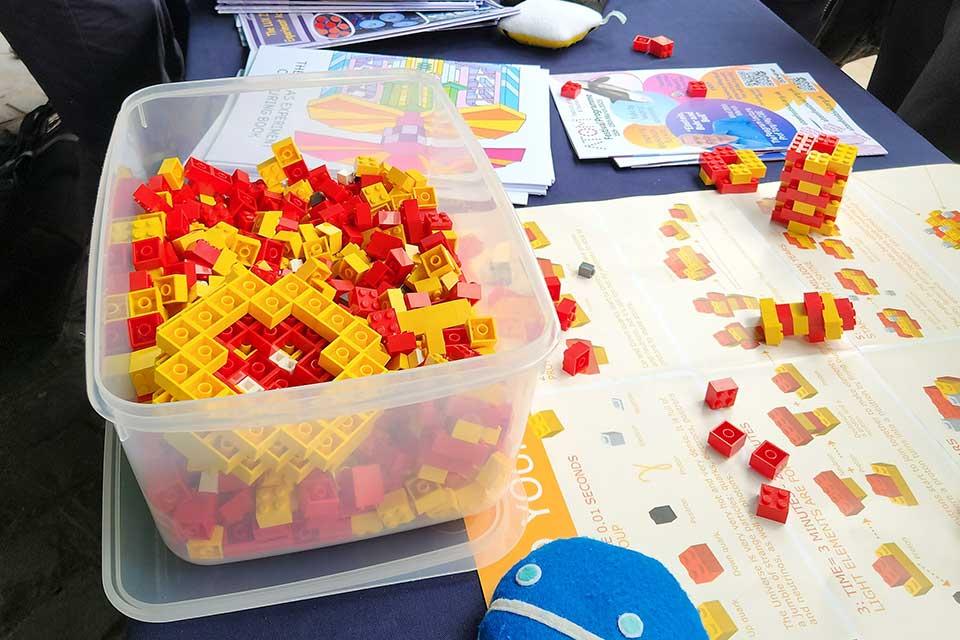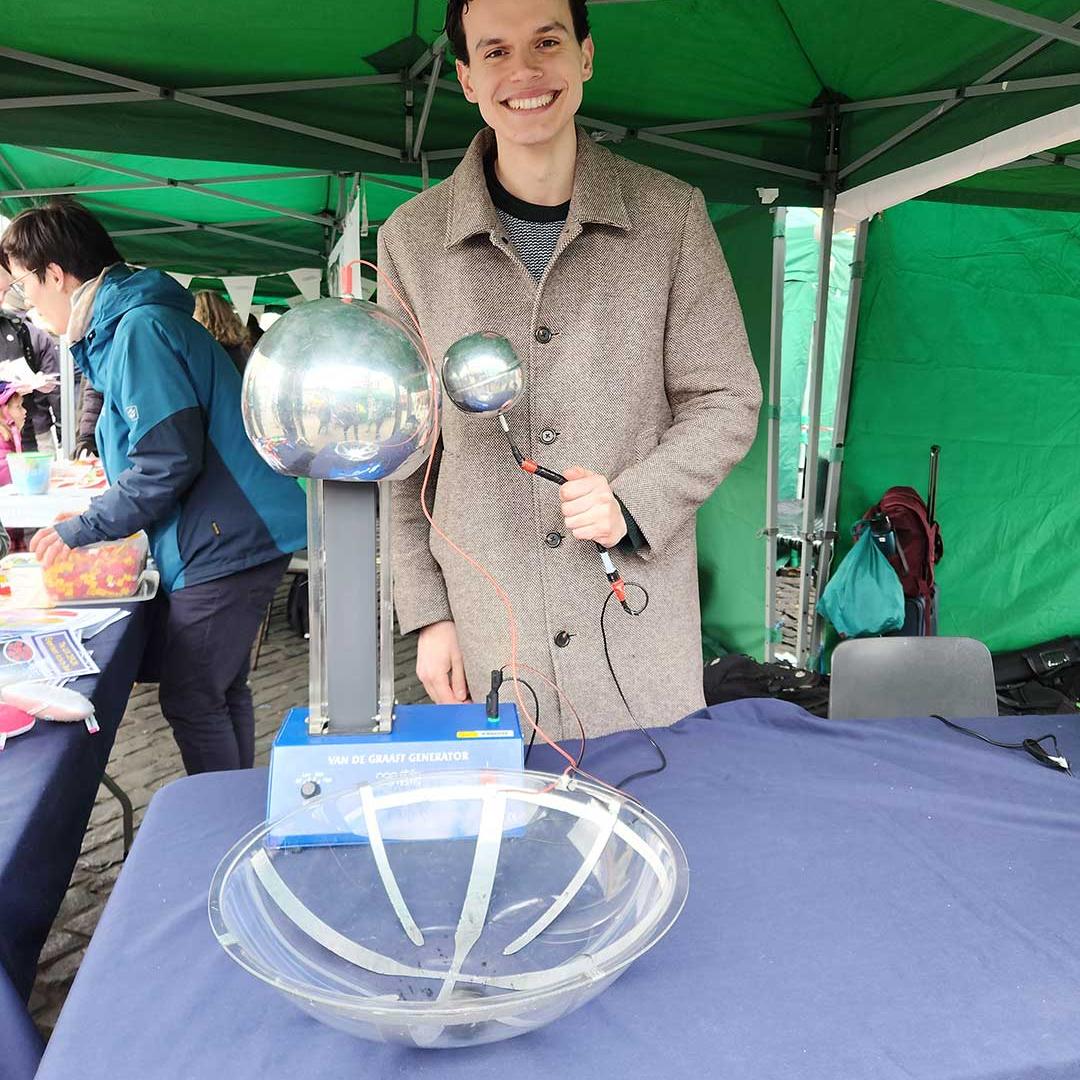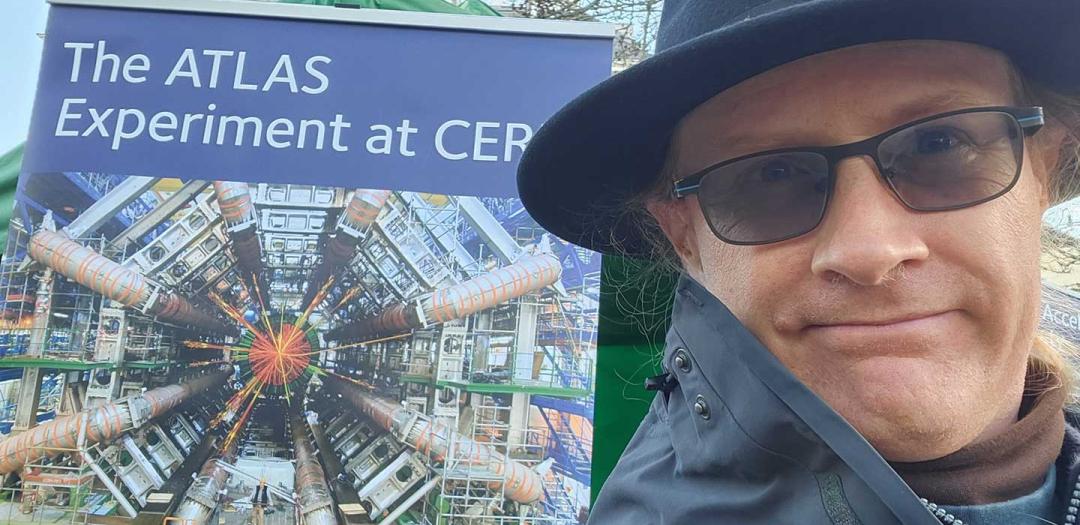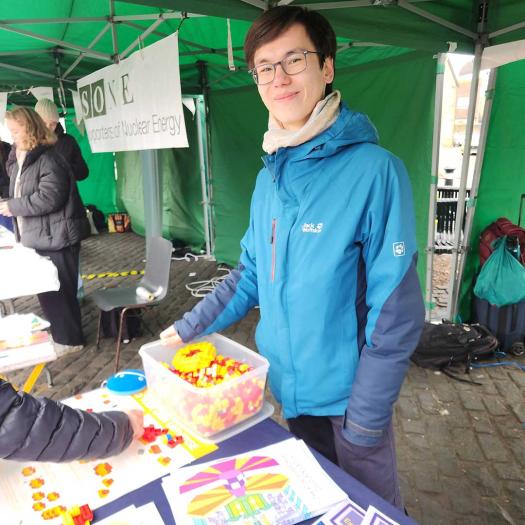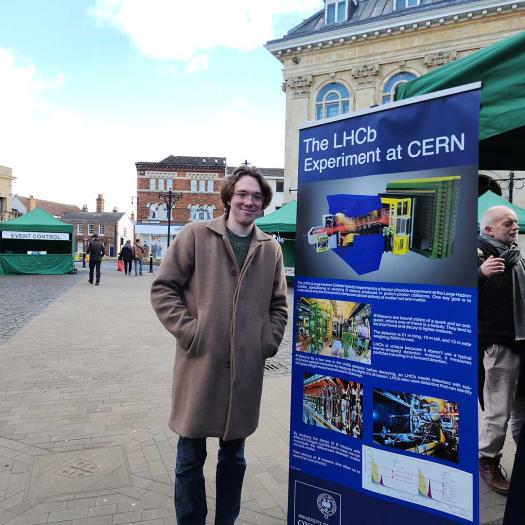On Saturday 15 March, particle physicists from the Department of Physics were tasked with sharing their love of fundamental physics with the wider public. As part of the ATOM Festival of Science and Technology, the team had a stall in the ATOM Science Market in Abingdon.
Particle Detector Development Scientist Dr Sam Henry was joined by DPhil students Charlie Wild, Ruben Honscheid, and Noah Rowe, and undergraduate student Yannick Fiss. With a collection of demonstrations and hands-on activities, the team set about illustrating the use of electrical fields to accelerate particles and using a Van de Graaff generator to accelerate a ping-pong ball around a plastic bowl—and make a lot of sparks.
Visitors were also given the opportunity to see the tracks of particles in a cloud chamber as well as find out more about a modern silicon particle detector. Younger visitors spent time happily clipping Lego bricks together to learn how the fundamental building blocks of up and down quarks make up protons and neutrons, and in turn, all the nuclei of all the elements in the Universe.
Charlie Wild had prepared a new poster for the event that explains the LHCb experiment, which he works on. The poster describes the experiment’s role in the quest to further our knowledge of why the universe is made of matter, when we believe the Big Bang produced both matter and antimatter. He comments: ‘I found the day to be very fun and interesting. I was surprised by how engaged and knowledgeable some of the children we spoke to at the stall were.’
‘We have worked with ATOM for several years now and it is always a rewarding experience,’ explains Dr Henry. ‘People can be put off by preconceived ideas about the complexity of physics. We try to show how fascinating it is as a subject and explain it in ways that not only get people’s attention but also help their understanding.’

